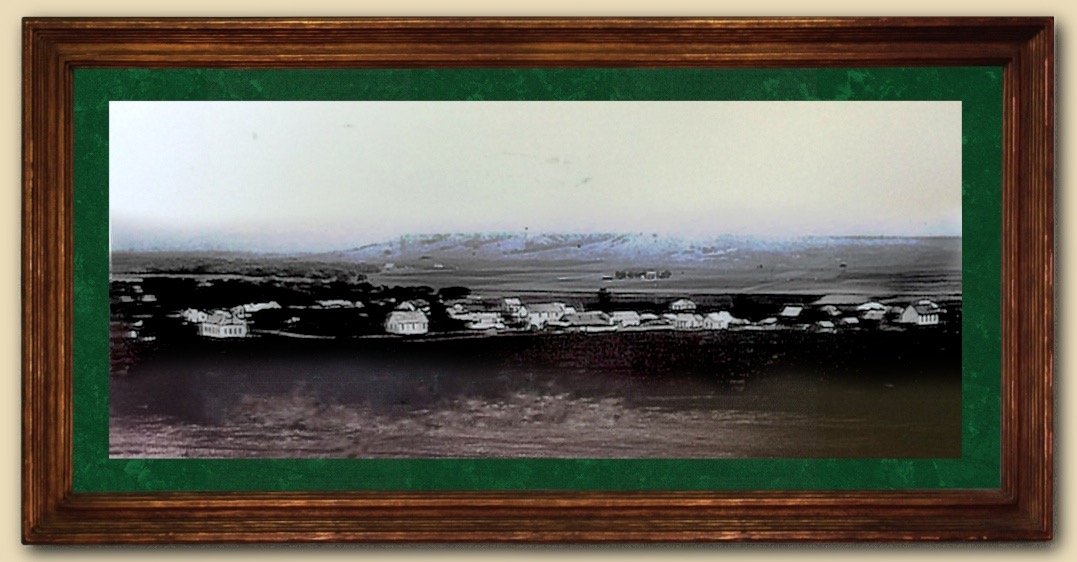Lovewellhistory.com was born August 22, 2013. There were 20 visitors that first abbreviated month, a total of only 750 by the end of the year. Lately I’ve been trying to spruce up the place, making sure all the pictures have proper captions and all the drop-down menus actually take visitors somewhere useful, all while evaluating the past year and deciding whether it’s worth renewing the lease on the joint.
I’m sure that if the Internet were a dance, this website would be sitting on the sidelines sipping punch with the other wallflowers. That’s only to be expected, I suppose, for a site largely devoted to the story of a man whose adventures were never widely published, and to the memory of White Rock and Lovewell, small towns in northern Kansas that dried up and blew away decades ago. However, the number of visitors has shown a marked increase since the start of 2014. There were 664 visits last month alone, when 346 different people dropped by at least once and examined 1,941 pages of content. Within the last year computer and mobile users visited 4,000 times and looked at 20,000 pages.
Those are the figures provided by the company which hosts the site. Google Analytics measures things differently, accounting for “sessions,” of which there are about 250 a month representing at least 100 cities across America and around the world. There were two sessions conducted last month from Perth, Australia, which gets the prize for farthest distance traveled. More cities from Nebraska were listed than from any other state: Superior, Hastings, Lincoln, Beatrice, Edgar, and Omaha. In Kansas there were visitors from Hays, Wilson, Mission, Manhattan, and Topeka. The city with the most pages scanned in one session is San Francisco with 19. The folks from Hays linger longest, 19 minutes on an average visit. After the U.S. the chummiest country so far this month is Canada, viewing 12 pages in the last three days. It may have had something to do with the World Cup, but last month there were 400 hits from Brazil, with 25 pages read or glanced at. What is hard to tell is whether the people who alight here for a time find what they’re after, or at least something they consider worth their time. There’s no number for that, and it’s probably just as well.
The best thing by far about the website is that within the last few months I’ve started hearing from frequent contributors Phil Thornton and Dave Lovewell, as well as Dawn Gabel, Robin Lovewell, Ed Mahler and others who’ve shared sources, stories, pictures, and memories of White Rock settlers and their descendants.
A few days ago Phil sent me a bright, big new picture of Sinclair Township’s natural landmark, Round Mound, the green hill that lay between the early settlement at White Rock and the later village at Lovewell. Even more recently Phil shared some small but tantalizing photos (Actually, photos of photos of photos) which a former resident of the area has kept, depicting Lovewell as it once stood. One of the pictures taken from a nearby hilltop looks very much like a quaint, idealized painting of a New England village, Old Dunstable some two centuries on. I can’t wait to see a more detailed version.

We all may get to see one soon. I just got off the phone with my newest acquaintance, an energetic lady known as “AJ” who is the granddaughter of another White Rock pioneer. Her grandfather was the former Swedish sailor who came to landlocked Kansas in 1868, changed his name from Petrus Eliasson to Pontus Ross, washed his hands of the past and prepared to start life anew on a farm that would have been within sight of White Rock City, if only he had stayed. Cheyenne Dog Soldiers had other ideas about his new career and his choice of a place to settle. Descending on his field in May 1869 eighty warriors ran off with his two bus horses and demolished a wagon as they thundered away to the west.
Ross retreated to Junction City where he worked as a laborer, saving money until he could file on another homestead, this one in Jewell County where he would bring his Norwegian bride Ingeborg and raise a family. So, we have eighty Cheyennes to thank for this excellent view of what was once the fastest-growing trade center in Jewell County, the village of Lovewell.